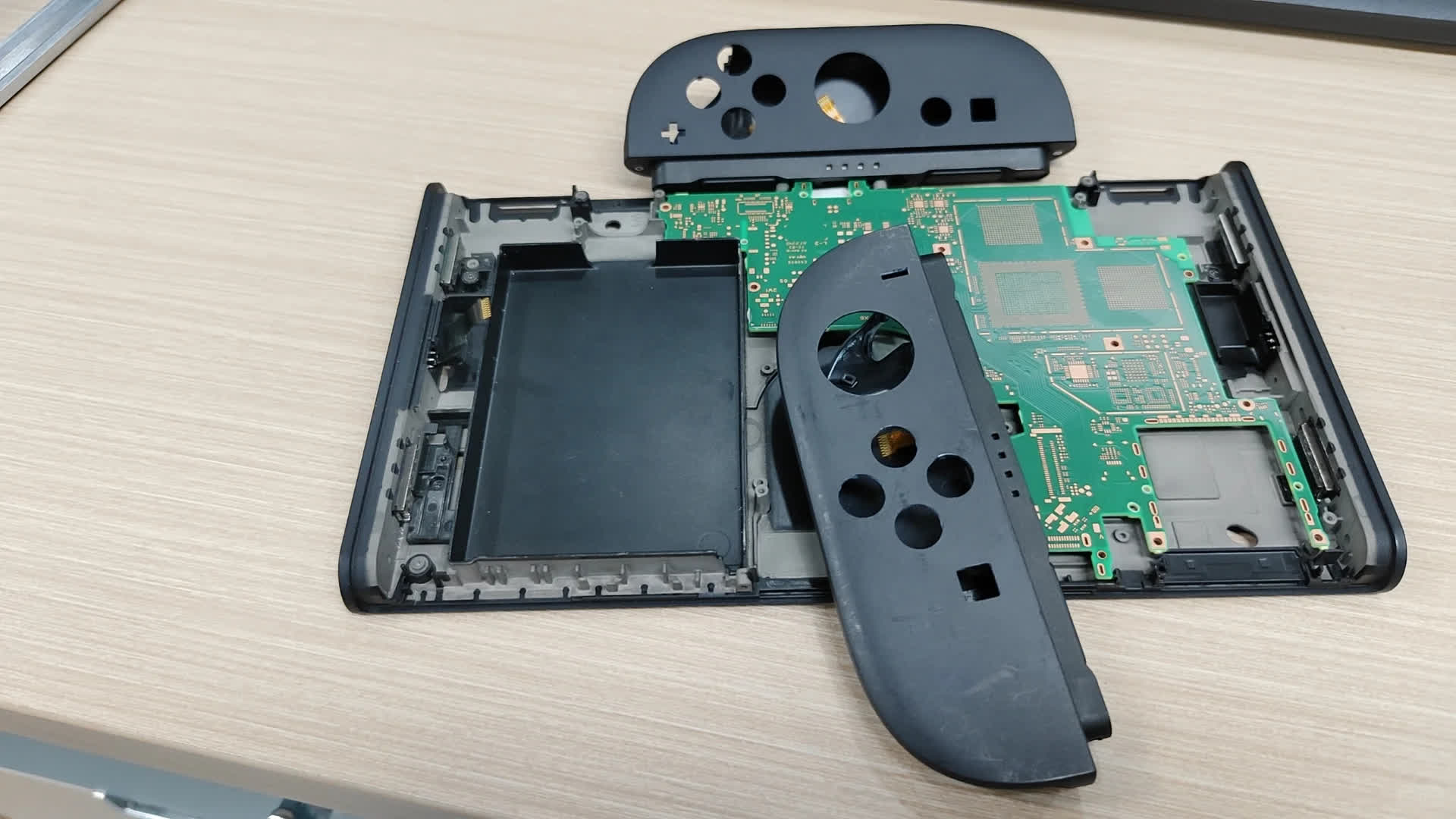Rumor mill: Rumors and supposed leaks surrounding the successor to the Nintendo Switch have intensified over the last few months as Nintendo remains silent on its plans. The skepticism surrounding the most recent leak, which purports to reveal the upcoming handheld console's casing, isn't surprising, but close examination suggests that it could be legitimate.

Several pictures possibly depicting the design of Nintendo's next handheld recently began circulating on social media. Although the images are unverified, they are consistent with inside information on the upcoming device's hardware and have withstood scrutiny.
The information dump includes computer-aided design (CAD) screenshots, photos of a disassembled unit, and a partially obscured look at a motherboard design without the chips mounted onto it. The images suggest that the Switch 2 closely resembles its predecessor, with a few crucial differences.
A summary of today's alleged Switch 2 images 'leak'. (1/3) pic.twitter.com/Z4rfSGz4WQ
– Andy Robinson (@Andy_VGC) September 18, 2024
Two CAD pictures show the original Switch for comparison, revealing that the revised design is considerably larger. Although the joy-con button layouts are nearly identical to the old Switch, the new design replaces the rail attachments with magnets. Additionally, the central unit includes two USB-C ports, one on the top and the other on the bottom.
A user posted the pictures to Reddit via Chinese social media. A source allegedly acquired a chassis model from a company developing accessories for the upcoming device and reverse-engineered it to create the CAD renders.
Theoretically, anyone could have mocked up a hoax design and 3D printed the shell based on previous leaks. However, a source privy to internal briefs that Nintendo sent to third-party developers told VGC that the leaked design aligns with them.
Furthermore, an analysis of the motherboard photo from Eurogamer's Digital Foundry suggests it would have been too difficult to fake. Slots for the previously reported two 6GB LPDDR5X RAM modules are visible, and the memory interface might be 128-bit, potentially enabling bandwidth of up to 102 GB/s.
Previous leaks indicated that the Switch 2 will include 256 GB of UFS 3.1 internal storage, an eight-inch screen, support for 4K while docked, and Nvidia DLSS. The SoC is likely a custom Nvidia chip called the T239, based on the Ampere architecture featured in the GeForce RTX 3000 graphics cards. Samsung's 8nm process is the likely suspect, but 6nm is also possible.
One of the few things known for certain about the upcoming handheld is that Nintendo plans to unveil it before the current fiscal year ends on April 1, 2025. The company might launch the device soon after or later in the year.
Leaked Nintendo Switch 2 chassis "almost certainly real," analysts say